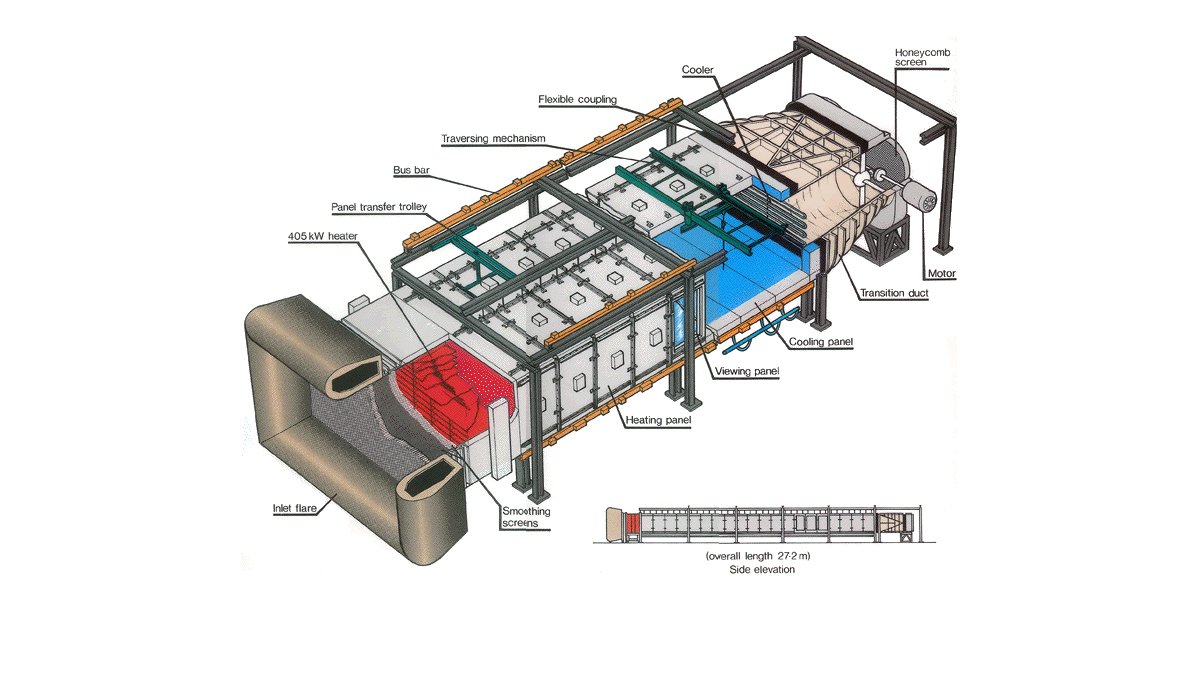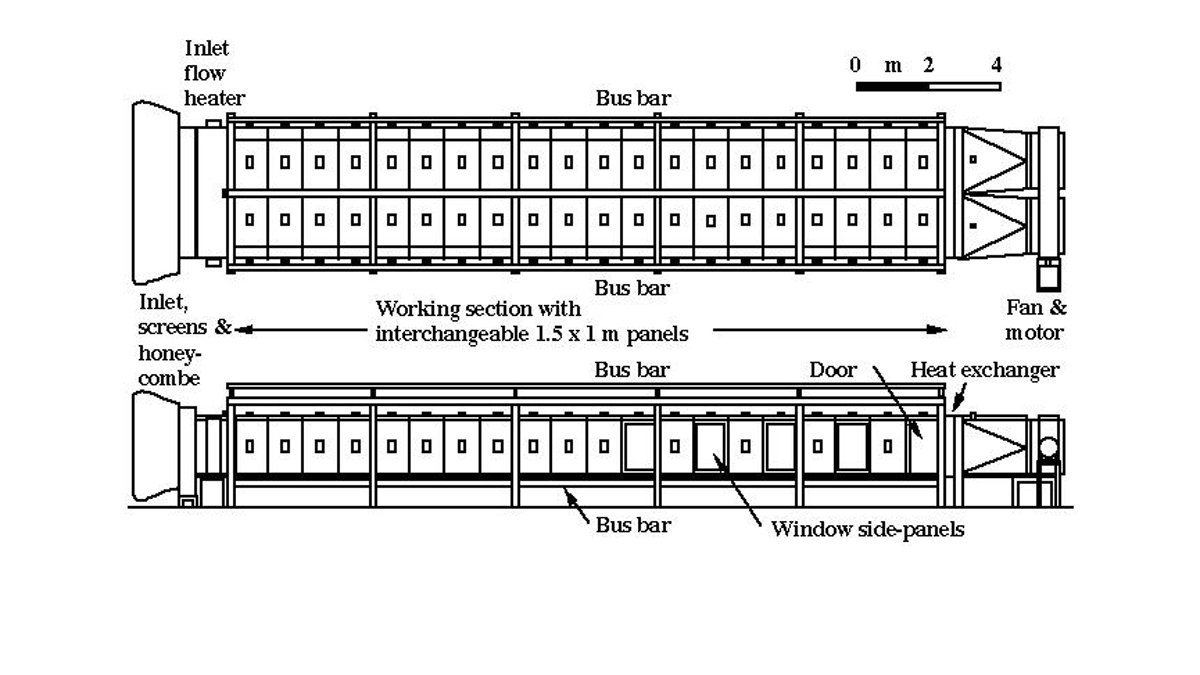
Facilities
We host various facilities to help with our research and teaching including multiple wind tunnels and a fully-automated laboratory measurement instrumentation suite.
Wind tunnels
Aero tunnel
A 1 x 1.2 m test-section recirculating wind tunnel facility with maximum speed of 35 m/s, featuring a rolling-road capability, full (nonintrusive) floor-to-ceiling, fully-automated particle-image velocimetry and laser-Doppler anemometry scanning capability, a six-component force balance, a five-axis traversing system and a suite of other fully-automated instrumentation systems for quick-turnaround, high-yield experimental testing.
EnFlo tunnel
This is a large NCAS national facility capable of producing thermally stratified turbulent boundary layer flows with a wide range of temperature and velocity boundary conditions at scales of 1:100 to 1:1000. This tunnel is unique in the UK as one of few in the world which allow experiments to be carried out in controlled conditions simulating the Earth's atmosphere.
Wind tunnels A to E
| Tunnel A |
|
|---|---|
| Tunnel B |
|
| Tunnel C |
|
| Tunnel D |
|
| Tunnel E |
|
Meteorological wind tunnel
This wind tunnel is the EnFlo's main facility, it is a Natural Environment Research Council (NERC) - National Centre for Atmospheric Science (NCAS) facility, making it available to the NCAS community. It is also part of the National Wind Tunnel Facility.
At 20 metres long it features a comprehensive inlet flow and surface heating and cooling systems for generation of neutral, stable and unstable boundary layers and neutral and stable free flows.
Other key features include two three dimensional, computer controlled traversing gears, tracer supply systems, calibration facilities, a turntable and extensive condition monitoring. The tunnel and all associated capabilities operate under full computer control, enabling prolonged unmanned operation.
| Specifications |
|
|---|---|
| Dimensions |
|
| Air speed range |
|
| Inlet heater |
|
| Roof/floor panel performance |
|
| Side panel performance |
|
Research facilities
Other research facilities available include:
- Fully-automated laboratory measurement instrumentation suite which includes multi-axis Particle-image velocimetry, laser-doppler anemometry and flame-ionization concentration sensors
- Advanced sensor systems for the characterisation of turbulent flows.

Department facilities
Our Department of Mechanical Engineering Sciences has various available facilities including an Innovation for Health Learning Laboratory, virtual reality equipment and mechanical testing facility.

